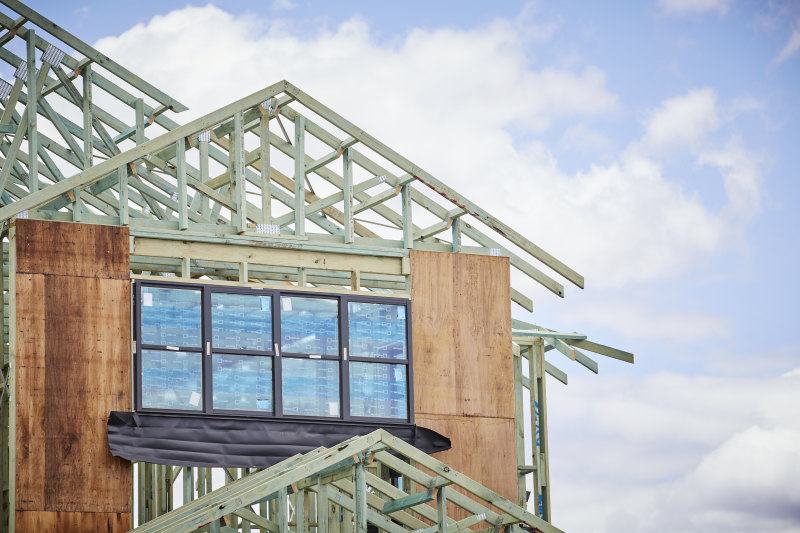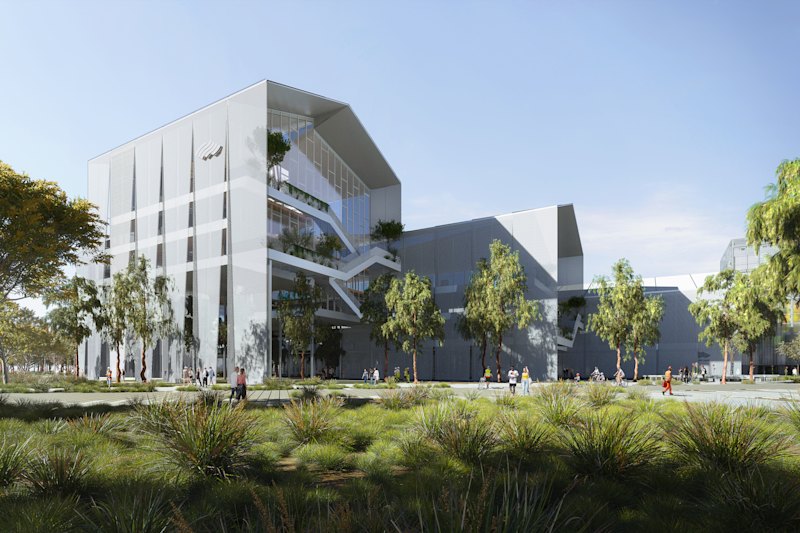
Five fixes to the housing crisis – from smaller homes to more builders
Australia is on track to fall short of its five-year target of building 1.2 million homes – and the issue of making housing accessible and affordable will stay firmly on the radar in the lead-up the next federal election due by May.
“The actual individual solutions are not complex, it’s the interdependencies and the execution,” said Commonwealth Bank chief executive Matt Comyn of how the country could overcome the crippling shortage of homes.

Mr Comyn was one of three executives – along with Lendlease’s Tony Lombardo and Stockland’s Tarun Gupta – at a special roundtable discussion hosted by the Business Council of Australia and The Australian Financial Review that met to unpack a long list of reasons preventing the country from hitting a target of 1.2 million new homes over the next five years.
Here are five ways they suggested the housing crisis could be fixed:
1. Bring in more migrants with construction skills
A higher proportion of the migration cap should be allocated to builder visas – only about 1400 visas have been for incoming builders over the past nine months – Mr Lombardo suggested. He said only 2.8 per cent of immigrants had construction skills, arguing that it should be closer to 10 per cent.
“It would be great to see more construction workers in hard hats,” he said, citing it as one thing that could help close skill and labour gaps.
Creating a permanent visa pathway for builders, much like existing programs for nurses, would make it easier for construction companies – primarily small businesses – to sponsor workers, Mr Comyn added.
2. Attract former builders back, and hire apprentices
Mr Gupta said attracting former builders back into the workforce would ease labour shortage and productivity pressures. He said a major reason for the builder labour shortfall and productivity declines was experienced workers had left the home building sector during the COVID-19 pandemic – and had not been replaced by younger workers who came in as apprentices.
“New crews take time to get back to the same productivity and supervision and the way they used to work, and that is not yet flowing through,” he said. One solution that could bring some of those experienced workers back into the construction sector was the federal government providing income or welfare incentives for these workers to return to the sector, he said.
BCA chief executive Bran Black said the federal government should also restart income incentives to convince more younger workers to go into apprentice programs. The Albanese government has reduced employer apprenticeship incentives, which Mr Black said was a step backward.
3. Creating a multifamily dwelling sector
Another way to ease the housing shortage was to build more multifamily dwellings, Mr Lombardo said, citing significant interest from big foreign investors.
Multifamily housing is a type of property where multiple separate units are contained within one building or several buildings within one complex. That type of housing is not common in Australia, but it has accounted for as much as 30 per cent of new housing in cities such as New York.
But the proliferation of multifamily housing, as well as build-to-rent housing, has been slowed by inconsistent withholding taxes and lack of tax relief in exchange for building affordable housing.
“I think we’ve got to really push hard into this because that should be 70,000 of our units. So at 150,000 homes, add that 70,000 and all of a sudden you’re almost hitting the 240,000,” Mr Lombardo said.
4. Building more modular homes
Mr Lombardo said a bigger push into modular housing could spark faster home building – but that would require more support from government.
Local regulations are tighter than in many other countries, which has made modular builds harder to financially stack up even though it would increase productivity by cutting material and labour requirements. Mr Lombardo said the regulations added up to 15 per cent to the cost of development.
He pointed to Singapore as an example of how the modular housing sector could grow, where the government has been promoting modular construction in a drive to boost productivity. It made modular construction mandatory on selected public residential projects in 2014.
“What I would say is when I was in Singapore for five years, the number of modular facilities increased from five to 35 so they’ve gone hard because they’ve put in a lot of significant standards that have pushed all developers to move to modular,” Mr Lombardo said. “I think, over the next decade, we’re going to evolve it because it has to be part of our productivity in terms of getting smarter on how we deliver those homes.”
5. Building smaller homes
It was not only having too few homes, but having too few affordable homes, said Mr Gupta. Most high-rise apartments were not financially feasible, except luxury ones, he added, which were too expensive for first home buyers. One way Stockland has been trying to alleviate affordability issues is to make townhouse lots smaller with the majority of its homes now being built to be 330 square metres, down from 380 square metres. The national average housing lot is about 400 square metres.











